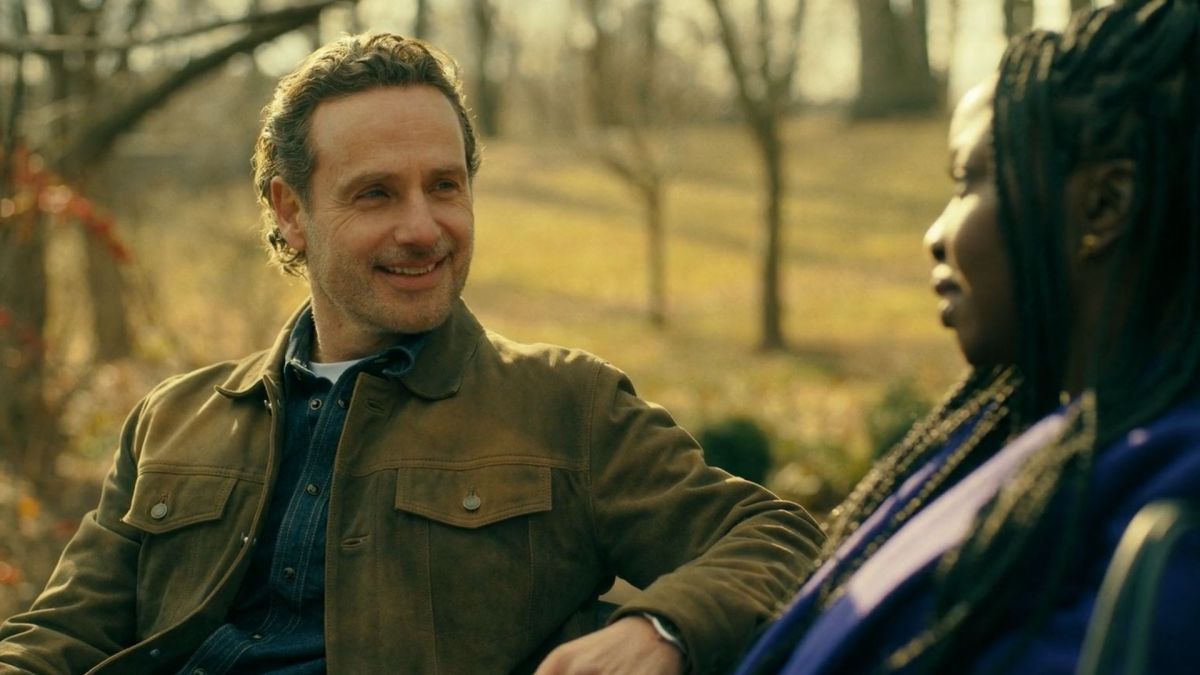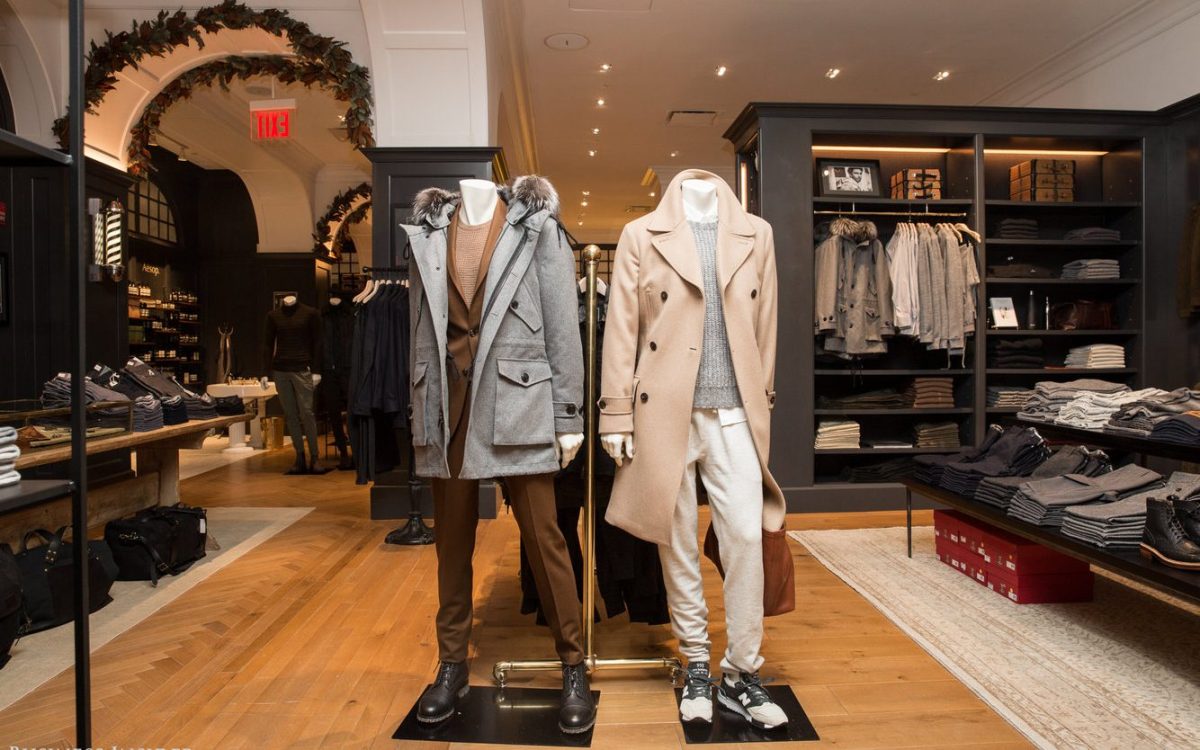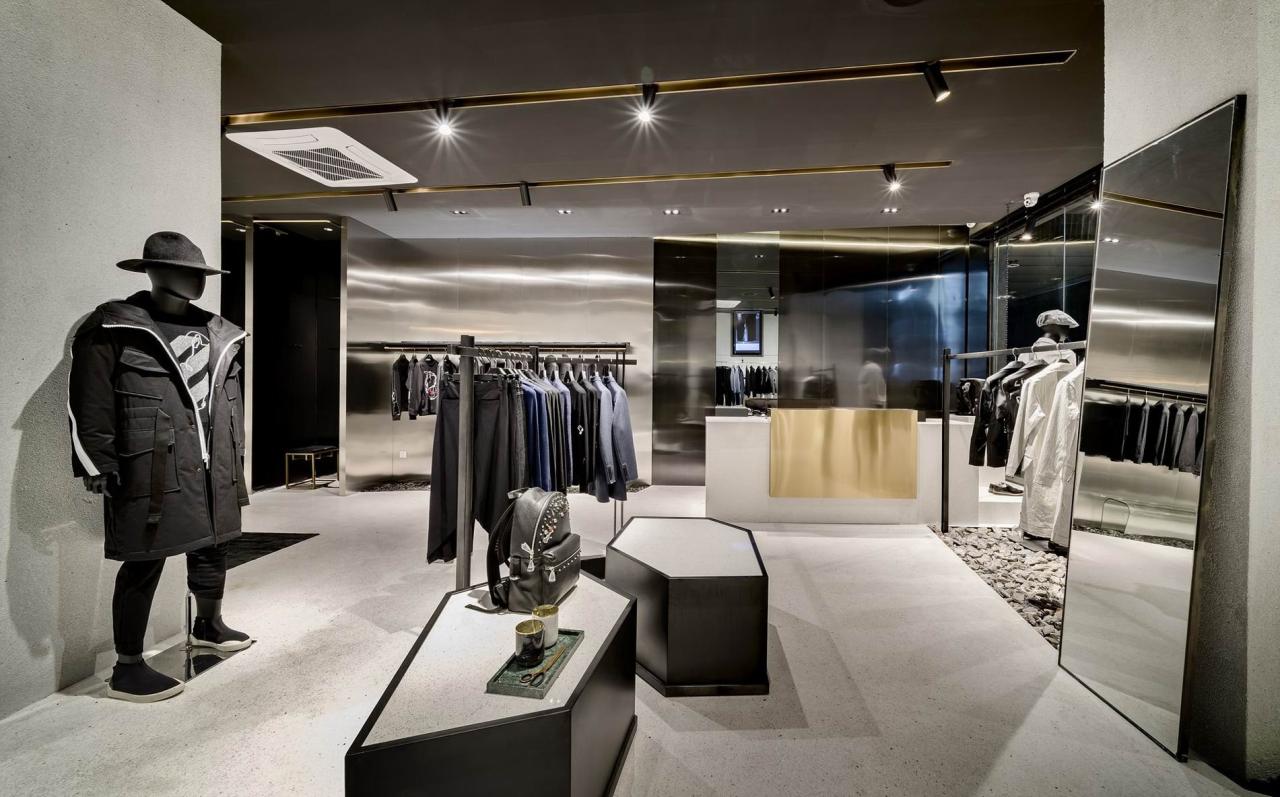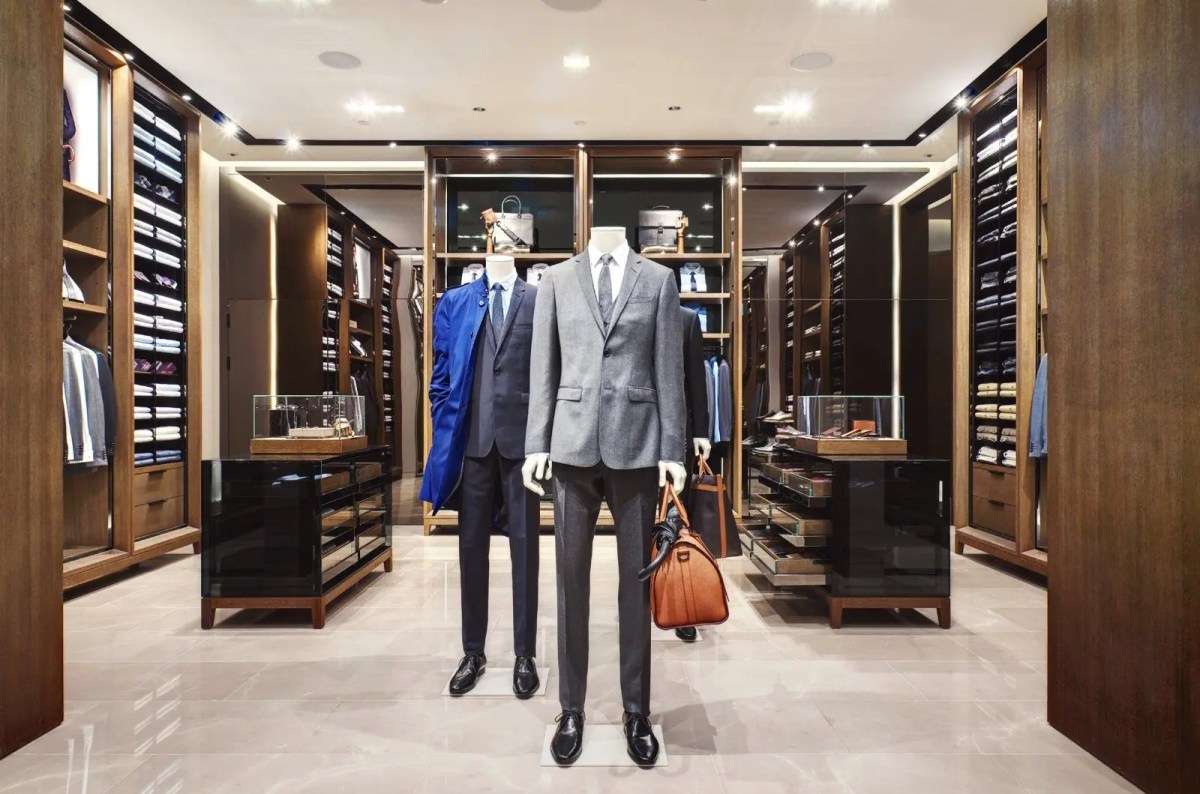Ricki’s and Cleo’s clothing stores closing marks a significant event, impacting not only shoppers but the local economy as well. This analysis explores the reasons behind the closures, the resulting economic consequences, customer reactions, and the future of retail in the affected area. We’ll delve into the ripple effects felt by neighboring businesses, explore alternative shopping options for customers, and examine potential strategies for future retail success in similar situations.
We’ll look at the financial impact – job losses, decreased property values, and reduced tax revenue – and present data illustrating the decline in sales and customer traffic leading up to the closures. Customer testimonials will highlight their disappointment, and we’ll compare the closed stores’ offerings with those of competitors. Finally, we’ll offer insights into the changing retail landscape and predictions for the future.
The Economic Impact of Ricki’s and Cleo’s Closures: Ricki’s And Cleo’s Clothing Stores Closing
The recent closures of Ricki’s and Cleo’s clothing stores have sent ripples through the local economy, impacting not only the stores’ employees but also surrounding businesses and the community as a whole. This section will detail the economic consequences of these closures, examining job losses, effects on property values, and the overall reduction in economic activity.
Economic Ripple Effect
The closure of these two established stores has created a noticeable void in the local retail landscape. Neighboring businesses, particularly those reliant on foot traffic generated by Ricki’s and Cleo’s, are experiencing decreased sales. Cafes, restaurants, and other shops in the immediate vicinity are likely to see a decline in customer numbers, impacting their revenue and potentially forcing cutbacks or even closures themselves.
This interconnectedness highlights the significant economic interdependence within the local business community.
Job Losses

The most immediate and tangible impact of the closures is the loss of jobs. Both Ricki’s and Cleo’s employed a significant number of staff, including sales associates, managers, and support personnel. These job losses not only affect the individuals directly but also ripple through the community, reducing household income and potentially increasing unemployment rates. The affected employees now face the challenge of finding new employment, potentially requiring retraining or relocation.
Impact on Property Values and Tax Revenue

Vacant commercial properties often lead to a decrease in property values in the surrounding area. The absence of Ricki’s and Cleo’s will likely impact the attractiveness of the location for potential new businesses, potentially lowering property values and rental income. Furthermore, the loss of tax revenue from these stores will strain local government budgets, potentially leading to cuts in public services or increased tax burdens on other businesses and residents.
Economic Contributions: A Comparison
| Metric | Before Closure | After Closure | % Change |
|---|---|---|---|
| Annual Revenue (estimated) | $500,000 (Ricki’s) & $300,000 (Cleo’s) | $0 | -100% |
| Employment | 15 (Ricki’s) & 10 (Cleo’s) | 0 | -100% |
| Property Taxes Paid | $10,000 (Ricki’s) & $6,000 (Cleo’s) | $0 | -100% |
| Sales Tax Generated | $25,000 (Ricki’s) & $15,000 (Cleo’s) | $0 | -100% |
Customer Reactions and Shopping Alternatives
The closure of Ricki’s and Cleo’s has understandably caused significant disappointment and frustration among loyal customers. This section explores customer reactions, Artikels alternative shopping options, and proposes a customer survey to better understand the impact of the closures.
Customer Testimonials
Social media and online reviews are filled with expressions of sadness and anger from former customers. Many cite the unique selection of clothing, the personalized service, and the overall shopping experience as reasons for their loyalty. Comments such as “So sad to see them go! They had the best selection in town,” and “I’m devastated! Where am I going to shop now?” are common themes reflecting the emotional connection customers had with these stores.
So, Ricki’s and Cleo’s are shutting down – bummer, right? It’s been a rough week for news, honestly. I just saw that Stuart Hogg sentenced for domestic abuse offences – Police Scotland , which is seriously heavy. Anyway, back to the clothes – guess we’ll have to find new places to shop now that those stores are closing.
Alternative Clothing Stores
Several alternative clothing stores exist in the area, offering a range of styles and price points. These include [Name of Store A], known for its trendy and affordable options; [Name of Store B], which focuses on higher-end designer brands; and [Name of Store C], a more budget-friendly option with a wider selection of sizes.
Comparative Analysis of Competing Stores
A comparison of price points and product offerings reveals that [Name of Store A] offers the most competitive pricing, while [Name of Store B] caters to a more discerning customer seeking higher quality and unique designs. [Name of Store C] provides a good balance between price and selection, making it a viable alternative for many former customers of Ricki’s and Cleo’s.
Customer Survey
A customer survey could help gauge the impact of the closures and identify preferred shopping alternatives. The survey could include questions about preferred shopping locations, preferred price points, desired product categories, and suggestions for improving the local retail landscape. This data would be invaluable in attracting new businesses to the area and understanding unmet customer needs.
Reasons for Closure and Business Strategies
Understanding the reasons behind the closures of Ricki’s and Cleo’s is crucial for preventing similar situations in the future. This section explores potential factors contributing to their demise and offers recommendations for improving the viability of similar clothing stores.
Potential Reasons for Closure, Ricki’s and Cleo’s clothing stores closing
Several factors could have contributed to the closures, including increased online competition, changing consumer preferences toward online shopping, rising operational costs, and a general economic downturn. A lack of adaptation to evolving market trends, ineffective marketing strategies, or poor inventory management could also have played a role. Perhaps a failure to diversify product offerings or target a wider customer base also contributed to the stores’ struggles.
Business Strategy Missteps
Possible missteps include a failure to embrace e-commerce, a lack of investment in marketing and advertising, or an inability to adapt to changing consumer preferences. An over-reliance on a specific customer demographic or a lack of innovation in product offerings could also have contributed to their decline. A lack of responsiveness to customer feedback and a failure to differentiate themselves from competitors might also be contributing factors.
Comparison with Successful Competitors
Successful competitors often demonstrate a strong online presence, a diversified product offering, a robust marketing strategy, and a focus on customer experience. They may also leverage data analytics to understand consumer behavior and adapt their strategies accordingly. A willingness to embrace new technologies and innovative business models is also key to their success.
Recommendations for Future Viability
- Strong online presence and e-commerce integration.
- Targeted marketing and advertising campaigns.
- Focus on customer experience and personalized service.
- Diversification of product offerings and target markets.
- Data-driven decision-making and adaptability to changing market trends.
- Strategic partnerships and collaborations.
Visual Representation of the Impact

Visual representations can effectively communicate the impact of the closures. This section describes several graphics that could illustrate the decline in sales, job losses, and the overall economic consequences.
So, Ricki’s and Cleo’s are closing – bummer, right? But hey, at least there’s some good news elsewhere: check out this article about Tyler Young, Who is Tyler Young? Peterborough star ready for FA Cup fairytale , to get your mind off things. Maybe a Peterborough fairytale can cheer us up after the sad news about our favorite clothing stores shutting down.
Decline in Sales and Customer Traffic
A line graph depicting the decline in sales and customer traffic over the past few years leading up to the closures would be highly effective. The graph would show a clear downward trend, with data points indicating specific months or quarters. The graph’s title would be “Decline in Sales and Customer Traffic at Ricki’s and Cleo’s,” and the axes would be labeled “Time” and “Sales/Customer Traffic.” Key data points, such as the months when sales began to decline significantly, would be highlighted.
Geographical Impact
A map illustrating the location of Ricki’s and Cleo’s and the surrounding businesses affected by the closures would provide a visual representation of the geographical impact. The map would highlight the stores’ locations and use different colors or shading to represent the severity of the impact on nearby businesses. For example, businesses experiencing the most significant decline in sales could be highlighted in a darker shade.
Job Losses and Economic Consequences
An infographic showcasing the job losses and economic consequences would effectively communicate the human and economic costs of the closures. The infographic would use a combination of charts, graphs, and text to illustrate the number of jobs lost, the estimated reduction in tax revenue, and the potential impact on property values. It would also include brief descriptions of the types of jobs lost and the potential long-term consequences for the affected individuals and the community.
Market Share of Competing Stores
A bar chart illustrating the market share of competing clothing stores before and after the closures would provide valuable insights into the competitive landscape. The chart would compare the market share of each store before and after the closures of Ricki’s and Cleo’s, highlighting any shifts in market dominance. The chart would be titled “Market Share of Clothing Stores Before and After Ricki’s and Cleo’s Closures,” and the axes would be labeled “Store Name” and “Market Share (%)”.
The Future of Retail in the Area
The closures of Ricki’s and Cleo’s represent a turning point for the retail sector in the area. This section explores the changing retail landscape, the potential for new businesses, and successful adaptation strategies.
Changing Retail Landscape

The retail landscape is constantly evolving, with the rise of e-commerce and changing consumer preferences presenting significant challenges for brick-and-mortar stores. The closures of Ricki’s and Cleo’s highlight the need for adaptability and innovation in the retail sector. Local businesses must find ways to differentiate themselves from online competitors and provide a unique shopping experience to attract and retain customers.
Potential for New Businesses
The vacant spaces left by Ricki’s and Cleo’s present an opportunity for new businesses to enter the market. The success of these new businesses will depend on their ability to meet the needs of the local community and adapt to the changing retail landscape. For example, a new store could focus on sustainable or ethically sourced clothing, catering to a growing segment of environmentally conscious consumers.
So, Ricki’s and Cleo’s are closing down – bummer, right? But hey, on a brighter note, check out this awesome news: Wicked leads with 4 SAG Award nominations; live announcement ! It’s a great distraction from the retail sadness. Anyway, back to Ricki’s and Cleo’s – maybe we can snag some deals before they’re gone for good!
Successful Retail Adaptation Strategies
Successful retail adaptation strategies often involve a strong online presence, a focus on customer experience, and a unique value proposition. Stores that successfully integrate online and offline channels, offer personalized service, and create a memorable shopping experience are more likely to thrive in today’s competitive market. Examples of successful adaptations include pop-up shops, experiential retail, and personalized customer service.
Predictions for the Future
Predicting the future of the retail sector is challenging, but several trends suggest a move toward more experiential retail, personalized service, and a focus on sustainability. Successful businesses will likely be those that embrace technology, create a strong brand identity, and foster a strong sense of community. The closures of Ricki’s and Cleo’s serve as a cautionary tale, highlighting the importance of adaptability, innovation, and a strong understanding of the changing consumer landscape.
Last Recap
The closure of Ricki’s and Cleo’s serves as a cautionary tale and a case study in the evolving retail environment. Understanding the factors contributing to their demise – from changing consumer behavior to competitive pressures – is crucial for businesses to adapt and thrive. While the immediate impact is undeniably negative, the situation also presents opportunities for new businesses to emerge and for the community to reshape its retail landscape.
The future of retail in this area will depend on innovation, adaptability, and a keen understanding of consumer needs.
Expert Answers
What will happen to gift cards from Ricki’s and Cleo’s?
Contact the stores directly or check their websites for information on gift card refunds or exchanges. Policies vary.
Will the buildings be repurposed?
The future use of the buildings is currently unknown and will likely depend on the property owners and market demand.
Are there any employee assistance programs available?
It’s possible; check with local employment agencies or the stores’ corporate offices for details.
What caused the sudden closure?
The exact reasons haven’t been publicly stated, but possible factors include competition, changing consumer habits, and economic conditions.
